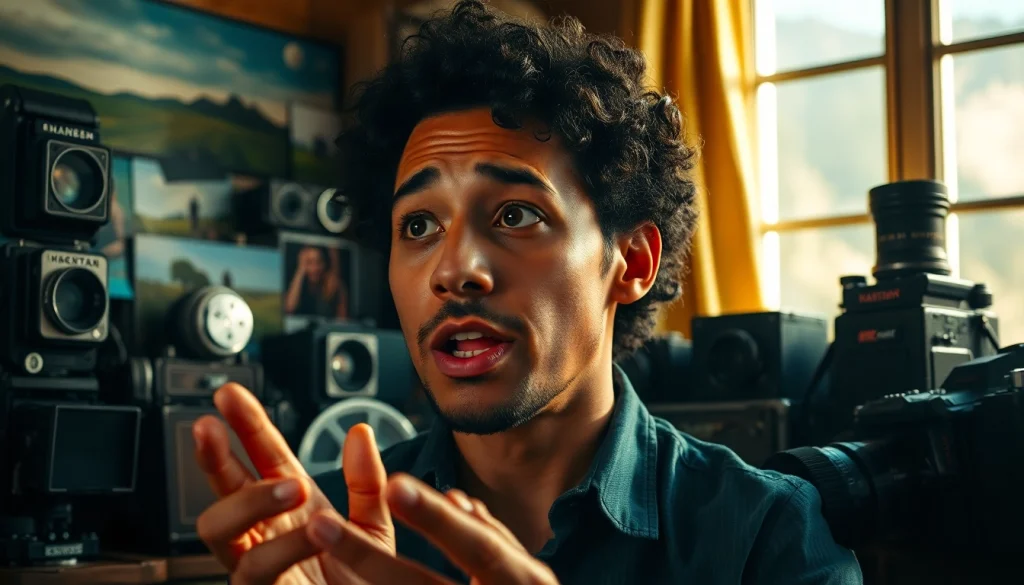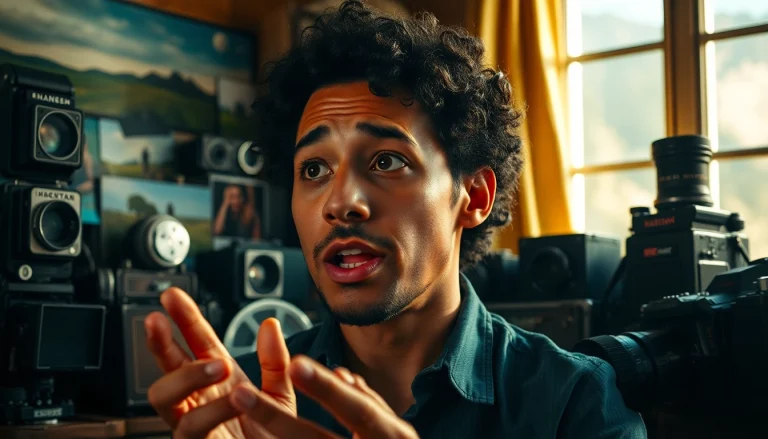
Understanding the Essence of Stories & Documentaries
At the heart of humanity lies the innate tendency to tell stories—a vital aspect of our cultural, communicative, and emotional makeup. Stories serve as conduits for conveying ideas, emotions, and experiences. In the realm of visual media, Stories & Documentaries play a crucial role in shaping perceptions and fostering understanding. The essence of storytelling through documentaries spans far beyond mere entertainment; it encapsulates the exploration of truths, narratives, and experiences that resonate deeply with audiences, guiding them through varied perspectives of life.
What Defines a Compelling Story?
A compelling story is more than just a narrative; it’s a significant embodiment of emotion, conflict, and resolution. Key characteristics that define a compelling story include:
- Relatable Characters: Characters are the vessels through which audiences experience the story. Their motivations, struggles, and growth forge connections with the viewers.
- Engaging Conflict: Every great story presents some form of conflict, challenging the protagonist and propelling the narrative forward.
- Emotionally Resonant Themes: A good story transcends surface-level entertainment by delving into universal themes such as love, loss, courage, and triumph.
Ultimately, a compelling story leaves an indelible mark on its audience, provoking thought, evoking feelings, and inspiring action.
The Role of Documentaries in Storytelling
Documentaries occupy a unique space that combines storytelling with factual representation. They serve as a bridge linking real-world events and experiences with the compelling narrative elements of traditional storytelling. Here are several ways documentaries fulfill this role:
- Highlighting Underrepresented Voices: Documentaries often focus on stories that may not receive adequate attention in mainstream media, giving voice to marginalized groups and issues.
- Educational Impact: Documentaries are powerful educational tools, informing audiences on social, environmental, and historical topics while inviting viewers to question and learn.
- Blurring Fiction and Reality: Despite being factual, documentaries can adopt narrative techniques typically reserved for fiction, enhancing the emotional engagement of viewers.
Key Elements of Successful Stories & Documentaries
Crafting effective narratives in documentaries requires attention to several core elements:
- Narrative Structure: A logical progression of ideas that guides viewers through the story effectively. Common structures include chronological order, thematic organization, and problem-solution frameworks.
- Strong Visuals: Visual storytelling is vital; cinematography, composition, and imagery play a pivotal role in engaging viewers and conveying emotion.
- Authenticity and Credibility: Trustworthiness is paramount in documentary filmmaking. Documentarians must adhere to ethical standards by representing subjects and events truthfully.
The Process of Creating Impactful Stories & Documentaries
Research and Concept Development
Successful documentaries begin with thorough research and conceptualization. This phase often comprises the following steps:
- Identifying the Subject Matter: Select a compelling theme or topic that captivates both the creator and the anticipated audience.
- Conducting In-Depth Research: Engage in comprehensive research to gather data, statistics, and stories that provide the foundational context for the narrative.
- Developing a Unique Angle: Determine how your narrative can stand out by presenting your subject uniquely, whether through focus, style, or storytelling technique.
Structuring Your Narrative Effectively
Once ample research is conducted, it’s time to structure the narrative. An effective documentary structure typically includes:
- Introduction: Entice viewers from the onset by introducing the subject and its significance.
- Body: Develop a rich narrative that explores various aspects of the subject matter, presenting interviews, facts, and personal stories.
- Conclusion: Resolve the narrative by providing an articulate takeaway that encourages reflection and incites dialogue among viewers.
Filming Techniques for Documentaries
The visual aspect of storytelling cannot be overstated. Here are some vital filming techniques to consider:
- Interview Techniques: Authentic interviews engage subjects comfortably. Framing and lightning also enhance the credibility and emotional depth of the content.
- B-roll Footage: Use supplementary footage that complements interviews and main narratives, enhancing context and visual interest.
- Editing and Pacing: Thoughtful editing shapes the narrative flow, combining various elements into a cohesive and engaging product that retains audience interest.
Engaging Your Audience with Stories & Documentaries
Identifying Your Target Audience
Understanding who your audience is can significantly impact the success of your documentary. Engagement metrics, demographic insights, and viewer preferences will guide production decisions. Key considerations when identifying your target audience include:
- Interests and Habits: Analyze potential viewers’ interests, viewing habits, and forums where they discuss media to align your narrative effectively.
- Demographics: Understand the demographic specifics, such as age, gender, cultural backgrounds, and socioeconomic status, to tailor content appropriately.
Building Emotional Connections Through Film
Emotional resonance is pivotal to maintaining viewer interest and influence. Techniques include:
- Storytelling Strategies: Employ fragmentation, juxtaposition, and shaping of emotional arcs to keep viewers invested.
- Creating Relatable Characters: Craft characters that evoke empathy, making them relatable to audiences’ own experiences and emotions.
Utilizing Different Formats and Platforms
In the rapidly evolving digital landscape, diversifying how you present your documentary broadens its reach. Some popular formats include:
- Short-form Documentaries: An increase in attention spans has led to the popularity of bite-sized content, great for platforms like TikTok and Instagram.
- Interactive Documentaries: Incorporate interactive elements allowing viewers to engage directly with the content, enhancing their personal connection.
- Podcast Documentaries: Leverage the growing interest in podcasts by presenting narrative content in audio format to reach new audiences.
Marketing Your Stories & Documentaries: Strategies for Success
Promoting Documentaries on Social Media
In an age dominated by social media, utilizing platforms for promotional strategies is essential. When marketing through social media, consider:
- Creating Engaging Teasers: Build anticipation with short clips or engaging visuals that tease the main documentary content.
- Utilizing Hashtags: Effective use of hashtags expands reach across social media platforms, connecting the documentary with various audiences.
- Engaging with the Community: Foster a community by interacting with viewers through comments, Q&As, and live streams that delve deeper into the documentary themes.
Collaborating with Influencers and Creatives
Partnering with influencers or creators can extend your documentary’s reach considerably. Approaching collaborations includes:
- Identifying Influencers in Your Niche: Collaborate with influencers who align with your documentary’s themes and audience to facilitate authentic promotion.
- Hosting Co-Creation Events: Engage with audiences through events that allow for dialogue and feedback, enhancing viewer investment.
Measuring Success and Audience Engagement
Your documentary’s impact must be measurable to ensure ongoing improvement and adaptation. Key performance indicators (KPIs) include:
- Viewership Metrics: Track total views, geographical distribution of viewers, and viewing duration to assess content reach.
- Engagement Levels: Analyze comments, shares, likes, and other interactions as indicators of audience connection and sentiment.
- Audience Feedback: Utilize surveys or direct feedback mechanisms to assess the audience’s emotional impact and overall satisfaction.
The Future of Stories & Documentaries in a Digital World
Trends Influencing Documentary Filmmaking
The future of documentary storytelling is shaped by several emerging trends:
- Increased Accessibility: Advancements in technology have made filmmaking tools more affordable, enabling aspiring filmmakers to produce high-quality documentaries.
- Virtual Reality (VR): VR technologies allow for immersive storytelling experiences, enabling viewers to feel physically present within the documentary narrative.
- Socially Conscious Filmmaking: A growing trend toward purpose-driven content has filmmakers increasingly addressing social justice, environmental issues, and other pressing societal themes.
The Impact of Technology on Storytelling
Technological advancements continue to reshape how stories are told. Important considerations include:
- Higher Production Values: Access to cutting-edge cameras, drones, and editing software has elevated production quality, making documentaries visually arresting.
- Distribution Channels: The rise of streaming platforms has revolutionized how audiences access and consume documentaries, democratizing the viewing experience.
Opportunities for Emerging Filmmakers
The documentary landscape is flourishing with opportunities for emerging filmmakers. Strategies for success include:
- Finding Your Niche: Focus on underreported subjects or unique perspectives that resonate with specific audiences, carving out a distinct place in the market.
- Networking and Community Engagement: Building connections within the filmmaking community can open doors to resources, funding, and collaborative opportunities.
- Embracing New Media: Engage with platforms and formats, such as podcast narratives or web series, that reach modern audiences in innovative ways.






